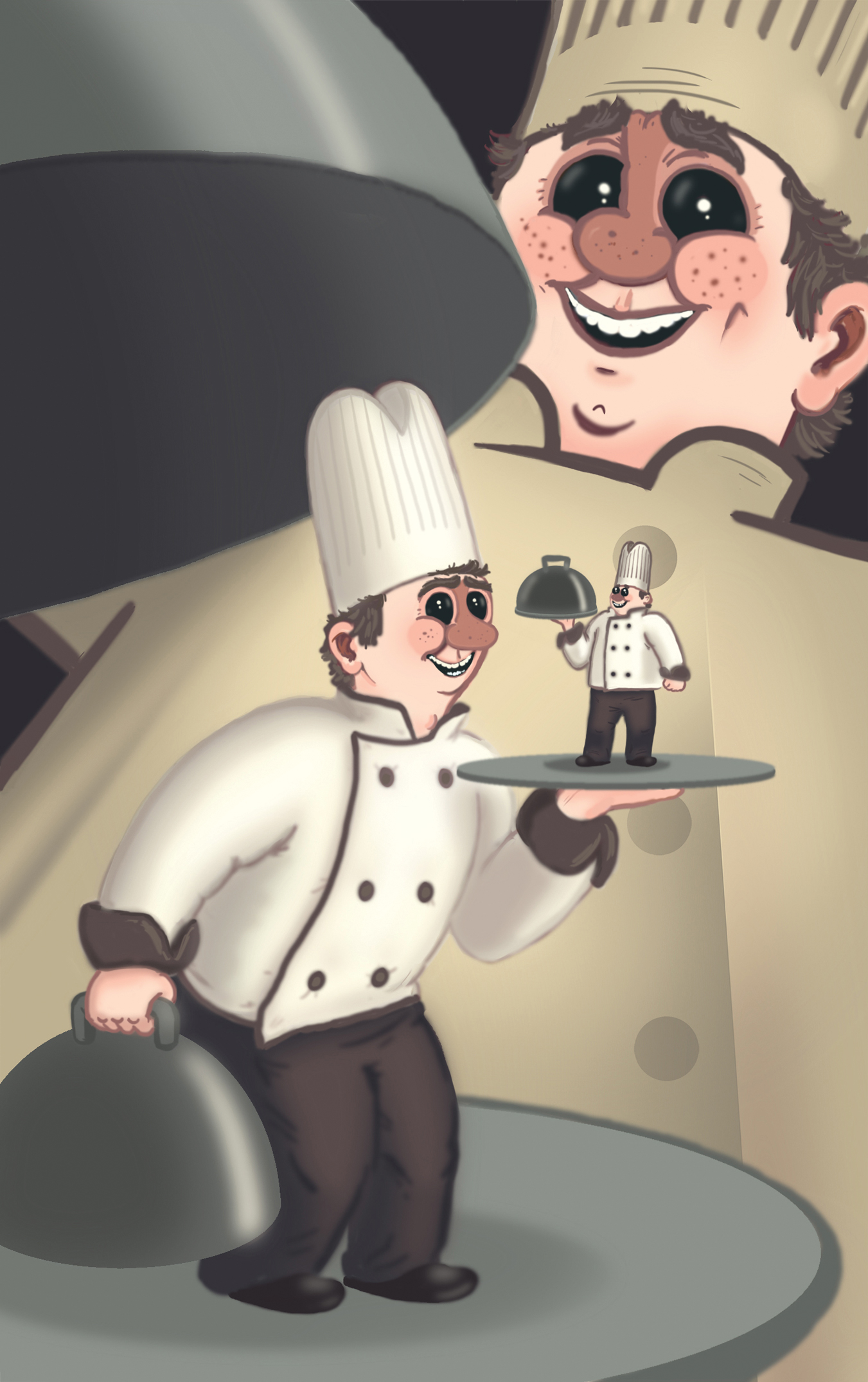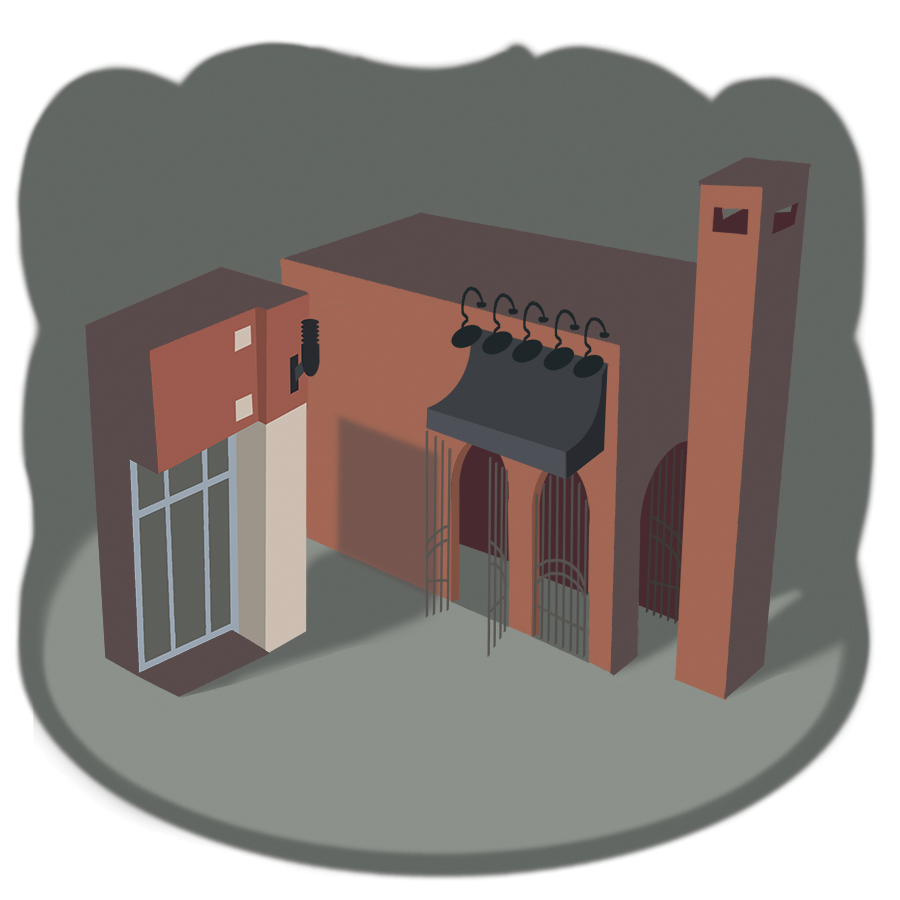Edmonton has long been fertile ground for chain restaurants, like Boston Pizza, Joey and Earls, to name a few. So, it’s no surprise that, for decades, the food scene was defined by big-box restaurants that won customers over with the promise of consistency and comfort.
But the last half-decade has seen the resurgence of independent restaurant owners going small in order to focus on quality, not quantity, and then spinning off new concepts instead of duplicating their successes. “We have a responsibility to do more concepts,” says chef-owner Daniel Costa. “And I think there’s a little bit of an underlying mission for all of us to take down the franchises.”
Daniel Costa ascends the stairs of his future and yet unnamed restaurant, muttering “look at this place,” surveying the hanging wires and holey walls. “I can’t believe I’m opening up another restaurant.” He squints, reading Psalms, one of countless biblical passages marking the bare walls. “I’m ready God to sing to praise.”
Maybe it’s a sign, maybe it’s a miracle, but the owner-chef needs neither to repeat the success of his ventures next door. Since bursting onto Jasper Avenue and 103rd Street with the hugely popular modern Italian restaurant Corso 32, he has added an exciting wine bar, Bar Bricco. Now he’s preparing for his biggest yet, an 80-seat trattoria that will simplify Costa’s cooking and introduce it not only to his already loyal dinner patrons, but to downtown lunch crowds as well.
“It’s my interpretation of what we would eat in Italy daily. It’s casual, traditional. There won’t be a lot of mucking around. If carrots are in season, we’ll fry them up with some rosemary and really quality olive oil. Boom. That’s it.” But simplified dishes like bistecca and pasta carbonara don’t make the job easier. “If I give you three ingredients and you do one thing wrong, you can taste it.”
It also demands more of him outside the kitchen. “At Corso, we can just go the market and we’re good for a week. But now we’re doing so much more product, we’re going to be building relationships with farmers.” Add to that the $1 million-plus venture – opening less than a year after Bricco.
That wasn’t the plan. The 28-seat room in-between vacated the month after signing the future trattoria’s lease, and he didn’t want another restaurant disrupting his empire. But why not just bash the wall and reduce Corso’s notorious month-long reservations in half? “Why ruin a good thing? A smaller restaurant lets you focus on the details. If a franchise owner came in and saw the way we do things in our kitchen, they’d be like, ‘What the f–k?'”
He has had offers to duplicate it in Calgary too, but, for the same reasons, he declined. Anything more than a block away is out of the question. “I wouldn’t feel in control. At least this was, I can go from one to the other, always be present. If a customer wants to talk, I can literally walk outside.”
Soon, he won’t even have to do that: He’s constructing a hallway that connects all three.
Nate Box has no idea how many people he employs.
Sitting on a tilted stool in District Coffee, the second in his kingdom of four cafes, he scrunches his face, cocks his head and calculates somewhere between 30 and 70. “We’re like a small-to-medium-to-small business,” he jokes.
Good thing he’s got Julianne Sherwin on double duty, as operations manager and coffee director, plus Erica Vliegenthart heading the bakery headquarters in District and Allan Suddaby as executive chef for the genesis, Elm Café, and its eponymous catering company that generates as much revenue as all four cafes combined.
“If you’d asked me five years ago: Will I have a catering company employing 30 staff? No,” says Box, who left the Sugarbowl’s kitchen before opening the walk-in-closet-sized artisanal sandwich shop in 2010. “It just snowballed. We’ve done 2,100 projects in three years.”
He’s since moved the catering kitchen from 118th Avenue to a discreet space near his Oliver home and downtown businesses to make it easier on him.
Marketing four distinctly named cafes comes with obvious challenges. “It’s hard to put on a different hat for each company so that they’re not too homogeneous.” He tries to avoid the “Nate Box brand” because it discredits the team. A chain, he admits, would be easier to promote but he believes in building businesses that complement the neighbourhood.
For example, his latest, Little Brick, is an easy-going café in a historic Riverdale home, with an accompanying general store for an “under-serviced” community. Burrow, the appropriately named Central Station joint that opened in October, is a speedy cafe and espresso bar catching people as they dash to their offices. Likewise, Elm and District aren’t interchangeable. “Elm is too eccentric.” Duplicating it in District, near the Alberta Legislature, he says, would result in government workers being a tad weirded out by sandwich fillings such as watermelon salsa and Hickory Sticks.
He doesn’t even use the same beans between each shop. “There’s no such thing as the best coffee roaster. There’s a ton doing amazing work and we wanted to build that realization into Edmonton coffee culture.”
Despite their differences, they have one thing in common, he says: “Great coffee, great food and great service.”
They say family and business don’t mix. They say restaurants are the toughest businesses to sustain. And yet the Crudos have defied both pieces of advice for 30 years, though always one restaurant at a time. With the success of Café Amore, a pasta kitchen tucked away in Central McDougall, Giuseppe and sons, Cristo and Nick, are doubling down on a seafood bar in the core of Edmonton’s dining district on 104th Street.
Opening early spring, Black Pearl is a few notches up in price point, concept and design – a stark contrast from the plaid-clad tables – and less about Italian cuisine than just good Canadian seafood. “I want to showcase our fantastic coastal foods,” says Nick. “Even though we’re in the middle of the prairies and people don’t have the assumption of good seafood, it’s glorious to see what kinds of fish we can get our hands on.”
That’s swordfish, mackerel, marlin and shark, to name a few. Nick spent the latter part of 2014 studying up on sustainable seafood and visiting Vancouver and Halifax fisheries to avoid distributor’s limited offerings. Sporting inked-up arms, shorts and a company ball cap, he stands out from his conservatively dressed older brother and 65-year-old father.
Together, they opened Café Amore in a northside strip mall in 2011. Unlike your typical Italian eatery, they took no shortcuts, making most of their pastas and all of their sauces from scratch. Its prompt popularity and a rent hike forced them to relocate centrally. They probably could have supported another or two just like it, following the success of the local Sorrentino’s chain, but it didn’t appeal to them. “We want to keep this humble, from the core of our hearts, and do something very different,” says Nick.
But while a humble Italian eatery is a safe bet, Black Pearl comes with a lot of risk, not in the least because of its uncommon concept. The cost per square foot dwarfs any of their ventures before it, and it’s not lost on them that it’s incarnating the former Lit, another high-end Italian restaurant that had a good run but didn’t make it.
Whatever the outcome, they’re confident they’ve got the right partners. “They say never get involved with family, but there’s a flipside to it that says always get involved with family in business,” says Cristo. “It depends on who you trust.”
Frank and Andrea Olson remember trying to ease Red Ox Inn customers off the laminated menu by using specials and explaining that tuna can be merely seared. But 19 years after the Olsons bought the fine-dining establishment, some customers now know as much as the Olsons do about what’s on their plates.
The popularity of the Food Network, increased travel and experimentation with new foods, along with the resurgence of farmers’ markets, have all played into an educated and “epicurious” customer base that patronizes the Red Ox and its kid sister, Canteen, which opened in late 2012. Unlike the tiny reservation-and evening-only Ox in Strathearn (a 1960s institution that later made regular SCTV cameos as the Beef & Booze), everything about Canteen is approachable. The brunch, lunch and dinner eatery seats 80 people in an ultra-casual room in the middle of Westmount, the Olsons’ neighbourhood.
“We wanted, more than anything, to be close to home,” says Andrea, seated at one of Canteen’s bare wood tables. “We have three kids and they all work here.” Frank reminds her that one of them is nine years old. “He volunteers,” she corrects. “His favourite thing ever is to cut potatoes.”
The restaurants also have much in common. For one, one of their first orders of duty at the Ox was to yank away the white tablecloths and other gourmand holdovers. Also, Frank, a self-taught chef, has been sourcing his ingredients from the downtown market long enough to remember when it was on 97th Street. “It was much smaller, but there were gems,” he says. Today, he works so closely with farmers that he advises them on what to grow, like watermelon radish and baby Thumbelina carrots, or whatever else is trending in foodie kitchens. That would have been laughable a decade ago.
Though they’d been training the Edmonton palate for the food revolution, they don’t see the emergence of other upscale restaurants as competition. “I still think Edmonton is primarily a chain place,” says Frank. “And our agriculture is still super underappreciated.” Plus, Andrea adds, “I’ve always said we’re our own competition.”
By that, she means staying passionate about their menu and not having two open doors vying for the same customers. In fact, she’s found the older clientele at the Ox coming to Westmount for brunches, and Canteen’s younger patrons spending special occasions on the southside. “They feed each other.”
Within four years of opening, Tres Carnales Taqueria won acclaim from the Toronto Star and a spot on the Food Network’s You Gotta Eat Here. It was named one of the 50 best restaurants in the country by Maclean’s. With lineups that hardly relent from lunch to evening, you’d think the next step would be franchising this raving success.
You would be wrong. “The taqueria is a gold mine,” says chef Edgar Gutierrez, who co-owns it with Chris Sills and Daniel Braun, “but if we were to open another, it loses its soul, becomes watered down. Larger corporations start streamlining, so we started a rotisserie to expand the brand without reducing the integrity.” Now, just six months since opening, their downtown family-dinner-style restaurant, Rostizado, has infamous lineups of its own.
From the beginning the “three bros” wanted to also open tres concepts – a taqueria, a rotisserie and a botanero, or breakfast joint. “A taco shop was the easier sell, to show who we are and what we want to do,” says Braun, who moved from Puerto Vallarta in the 1990s. “The rotisserie is another familiar business. It’s where you go in, get a chicken, tortilla, salsa, a two-litre of pop. It’s fast and economical. Personally, I wanted to open a restaurant for 18 years and didn’t because I was scared I’d have to spend $4 million on something the size of a Boston Pizza.”
Taking after the taqueria, Rostizado is a lively and ultra-cool interpretation of street food, but it comes with many challenges. Investors worried that they were spreading themselves too thin. Food providers, too, were concerned, says Braun. “When farmers hear the volumes we handle, they get scared. ‘Cause, yes, we sell a lot of protein. About 400 chickens a week.”
But most of all, there was the million-plus front-end price – though they had the option of opening it in the former Jack’s Grill (close to Southgate Centre) space for a fifth of the cost, but it was too isolated. By opening in the Mercer building on 104th Street, it would be an eight-minute walk between the downtown businesses with identical operating hours.
Tres is a steady horse now, requiring less of Gutierrez, so you’ll almost exclusively find him at the rotisserie. “I can’t be as creative as I want to be because I can hardly keep up with demand,” he says. However, Braun says that, this time, they’re setting up the standards faster so they can take a step back sooner. After all, the plan was always three.
Like this content? Get more delivered right to your inbox with Ed. Eats
A list of what’s delicious, delectable and delightful.















